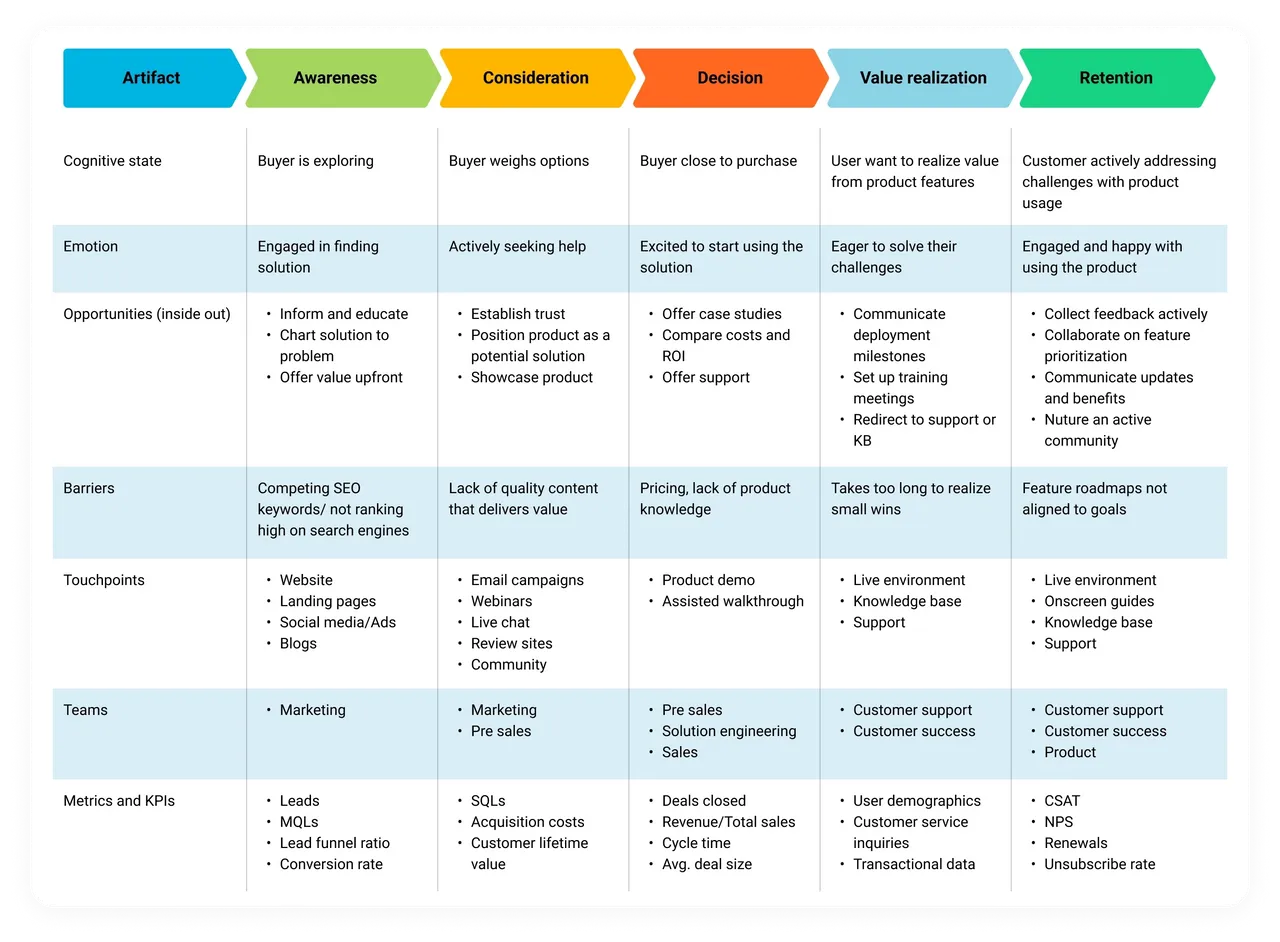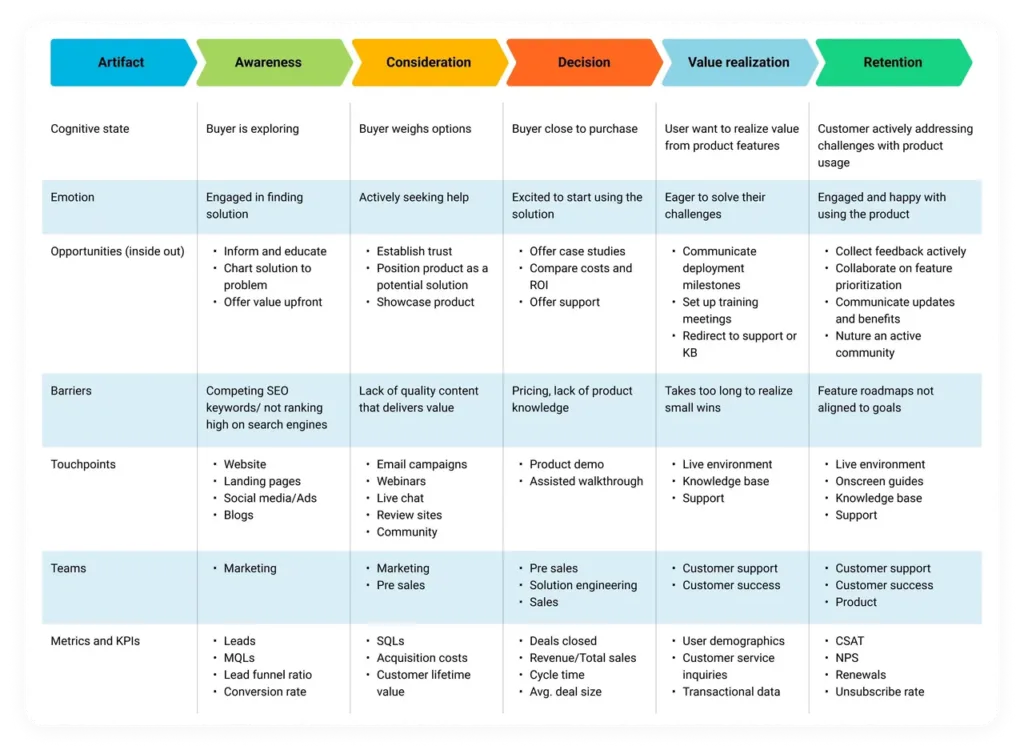There are a few different ways to map a customer’s journey, but a common approach is to use the following steps:
- Define the customer segments: Identify the different groups of customers that you want to map the journey to.
Identify the stages of the customer journey: Define the key stages a customer goes through in their interaction with your organization, such as awareness, consideration, purchase, and post-purchase. - Gather data: Collect data on the customer journey by interviewing customers, surveying them, and analyzing customer behavior data from different sources such as your website, social media, customer service interactions, and sales data.
- Create a visual representation of the customer journey: Use the data you have collected to create a visual map of the customer journey, which typically includes a timeline, key stages, touchpoints, and the customer’s feelings, feedback, etc.
- Identify pain points and opportunities for improvement: Review the map and look for opportunities to improve the customer experience by addressing pain points or adding new touchpoints.
- Implement changes: Based on the findings from the customer journey map, make changes to your organization’s marketing and customer service strategies to improve the customer experience.
- Measure the impact: Continuously measure the impact of the changes and iterate to improve the customer journey.
The process of mapping a customer journey is continuous, as the market or customer needs may change over time.

Source: Freshworks



